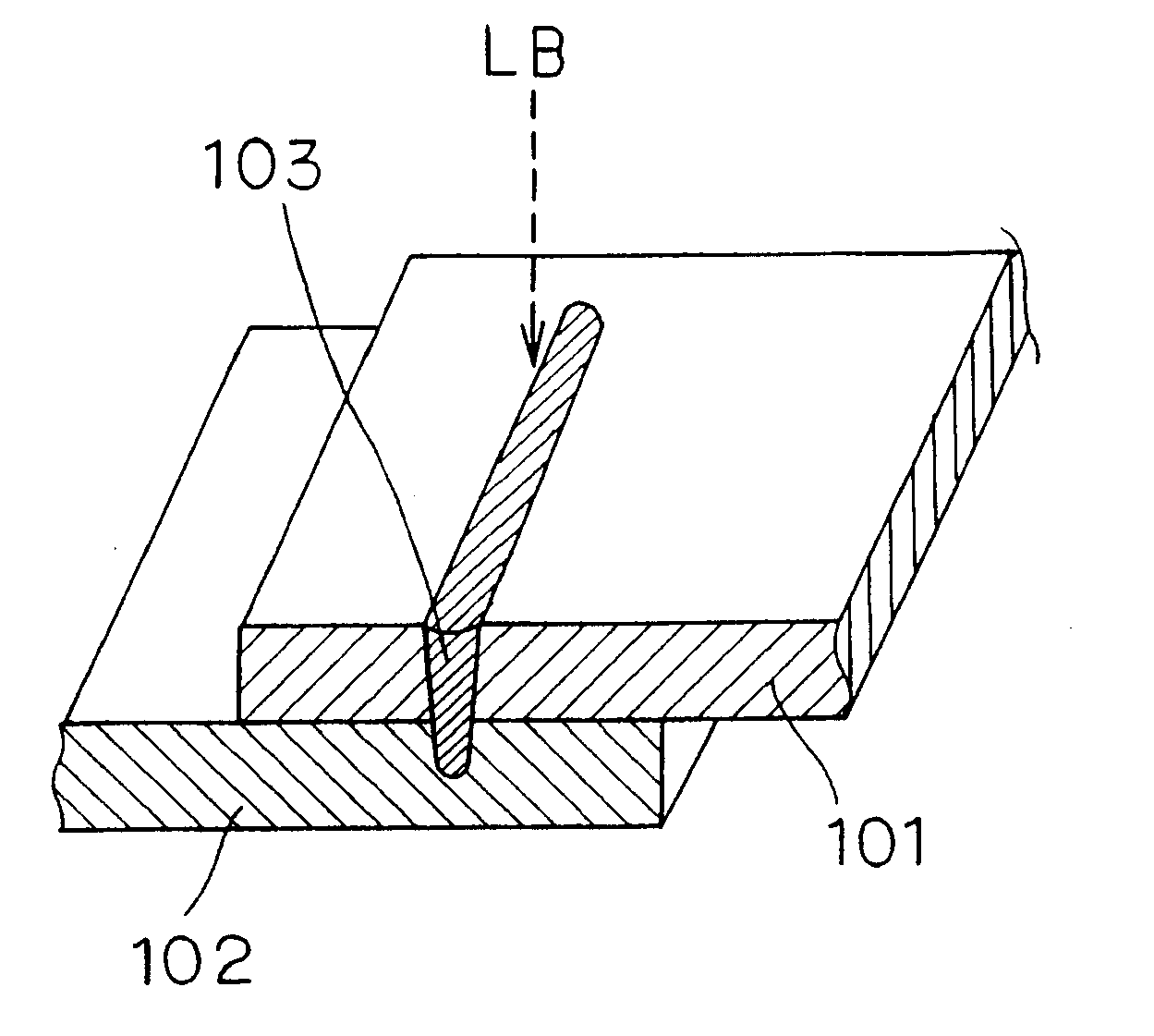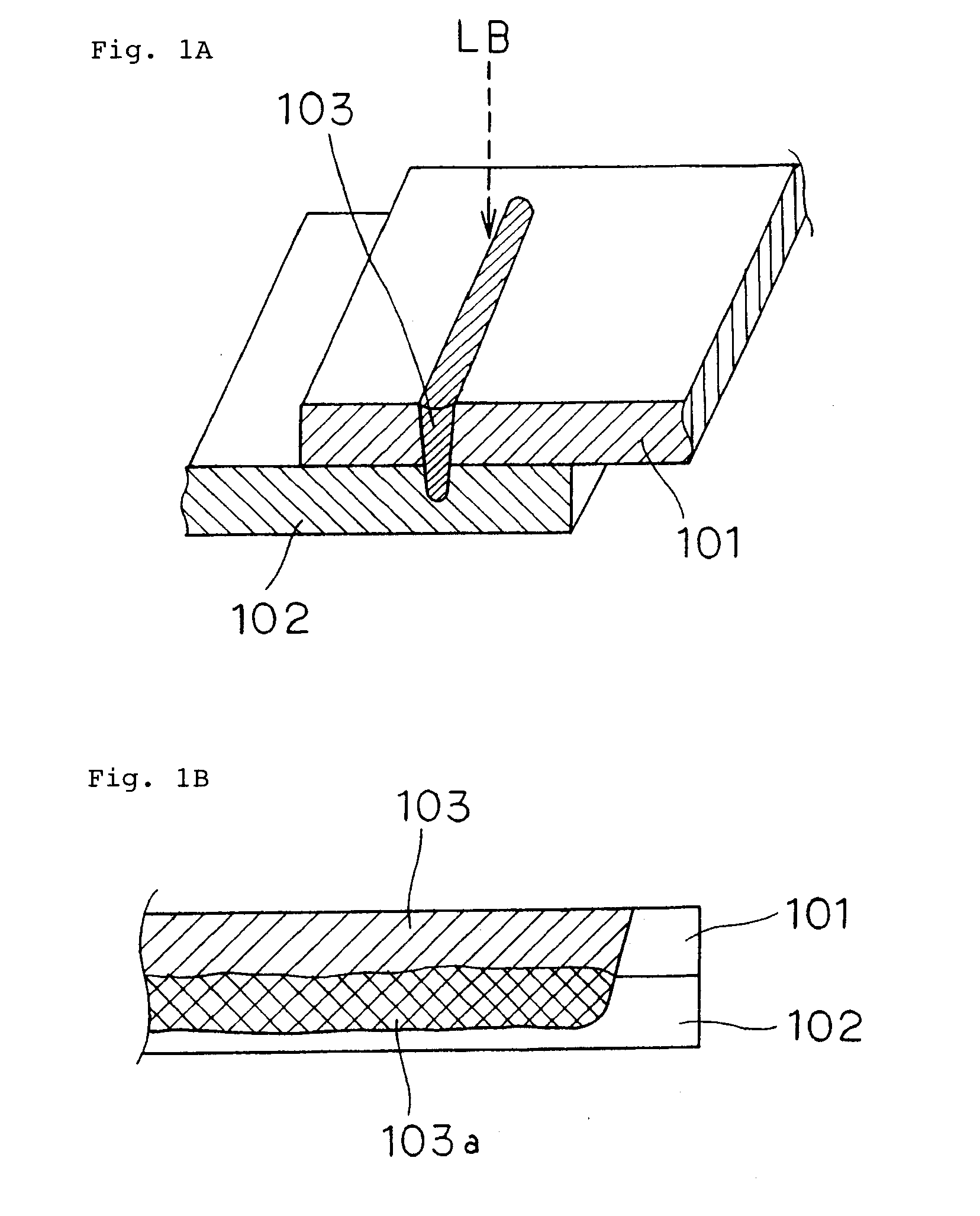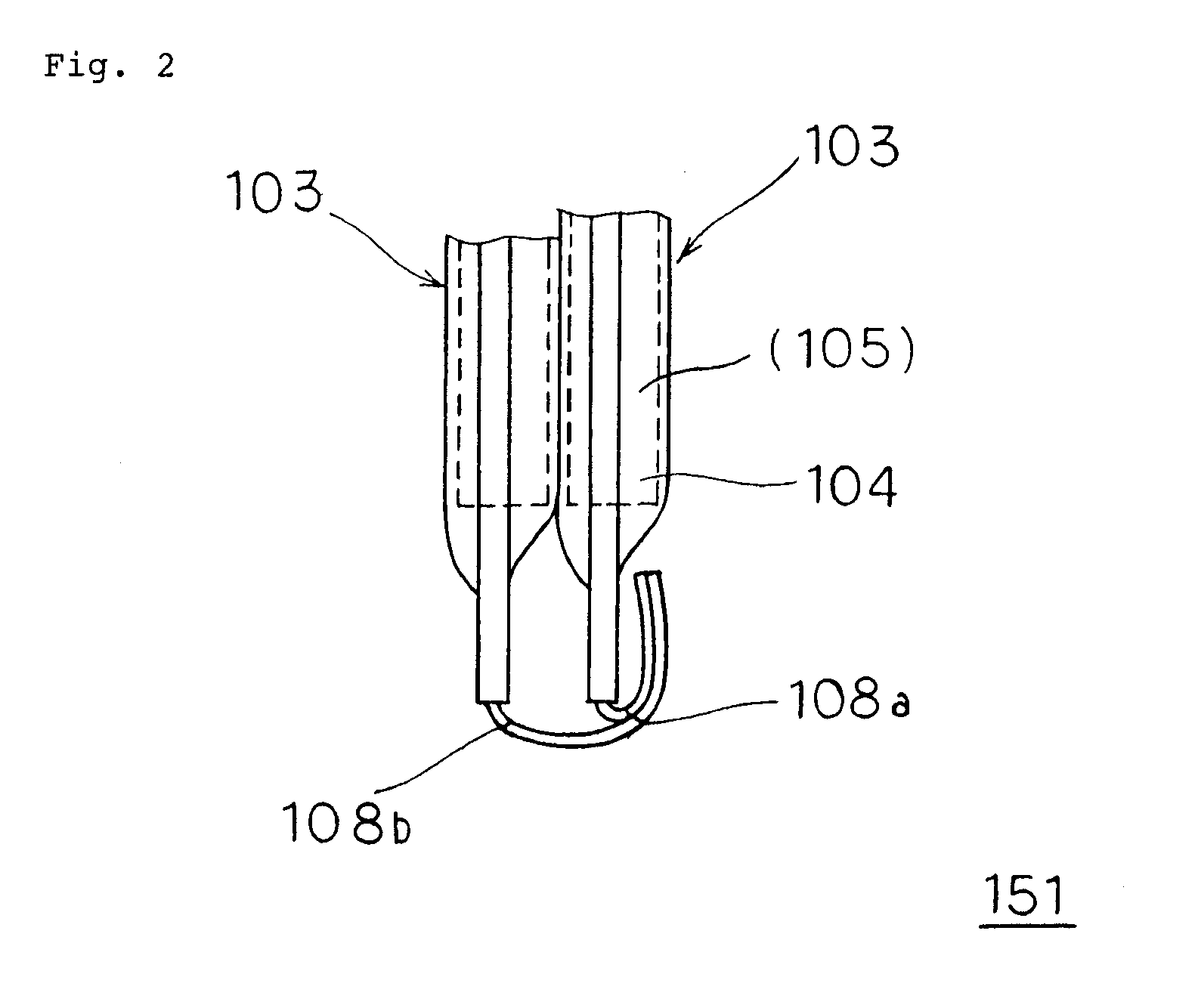Different metallic thin plates welding method, bimetallic thin plates jointing element, electric device, and electric device assembly
a technology of bimetallic thin plates and welding methods, which is applied in the direction of cell components, cell component details, manufacturing tools, etc., can solve the problems of deterioration of electric characteristics at connecting parts, and achieve the effect of sufficient electric characteristics and sufficient electric characteristics
- Summary
- Abstract
- Description
- Claims
- Application Information
AI Technical Summary
Benefits of technology
Problems solved by technology
Method used
Image
Examples
Embodiment Construction
[0042]Now, an embodiment of the present invention will be explained with reference to the drawings. FIG. 3 is a perspective view showing one embodiment of an assembled battery according to the present invention.
[0043]As shown in FIG. 3, assembled battery 50 is an electric device assembly which is configured by serially connecting a plurality of laminated battery cells 20 (electric devices). In FIG. 3, laminated battery cells 20 are shown as aligned in a line, but may be overlaid on each other when needed.
[0044]One laminated battery cell 20 has a generating unit (electric device element) not shown, which is hermetically sealed by outer capsule 4, and positive-electrode terminal 1 and negative-electrode terminal 2 that are electrically connected with the inside generating unit are extended from the periphery of the outer capsule 4. Also, in illustrated thin plate jointing element 10, positive-electrode terminal 1 and negative-electrode terminal 2 are jointed to each other by welding, ...
PUM
| Property | Measurement | Unit |
|---|---|---|
| aspect ratio | aaaaa | aaaaa |
| thickness | aaaaa | aaaaa |
| thickness | aaaaa | aaaaa |
Abstract
Description
Claims
Application Information
 Login to View More
Login to View More - R&D
- Intellectual Property
- Life Sciences
- Materials
- Tech Scout
- Unparalleled Data Quality
- Higher Quality Content
- 60% Fewer Hallucinations
Browse by: Latest US Patents, China's latest patents, Technical Efficacy Thesaurus, Application Domain, Technology Topic, Popular Technical Reports.
© 2025 PatSnap. All rights reserved.Legal|Privacy policy|Modern Slavery Act Transparency Statement|Sitemap|About US| Contact US: help@patsnap.com



